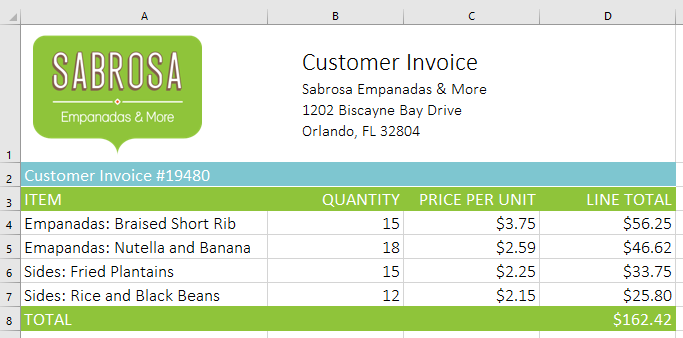Intro to Formulas
Introduction
One of the most powerful features in Excel is the ability to calculate numerical information using formulas. Just like a calculator, Excel can add, subtract, multiply, and divide. In this lesson, we'll show you how to use cell references to create simple formulas.
Optional: Download our practice workbook.
- Watch the video below to learn more about creating formulas in Excel.
Mathematical operators
Excel uses standard operators for formulas, such as a plus sign for addition (+), a minus sign for subtraction (-), an asterisk for multiplication (*), a forward slash for division (/), and a caret (^) for exponents.
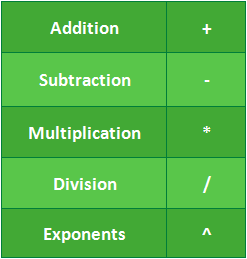
All formulas in Excel must begin with an equals sign (=). This is because the cell contains, or is equal to, the formula and the value it calculates.
Understanding cell references
While you can create simple formulas in Excel using numbers (for example, =2+2 or =5*5), most of the time you will use cell addresses to create a formula. This is known as making a cell reference. Using cell references will ensure that your formulas are always accurate because you can change the value of referenced cells without having to rewrite the formula.
In the formula below, cell A3 adds the values of cells A1 and A2 by making cell references:
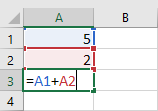
When you press Enter, the formula calculates and displays the answer in cell A3:
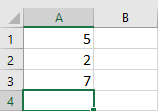
If the values in the referenced cells change, the formula automatically recalculates:
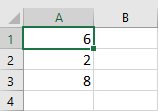
By combining a mathematical operator with cell references, you can create a variety of simple formulas in Excel. Formulas can also include a combination of cell references and numbers, as in the examples below:
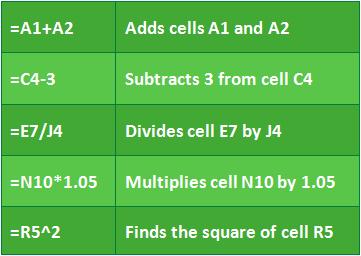
To create a formula:
In our example below, we'll use a simple formula and cell references to calculate a budget.
- Select the cell that will contain the formula. In our example, we'll select cell D12.
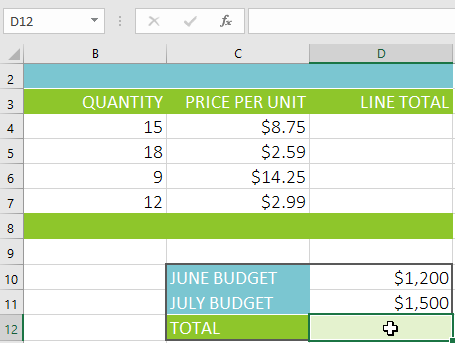
- Type the equals sign (=). Notice how it appears in both the cell and the formula bar.
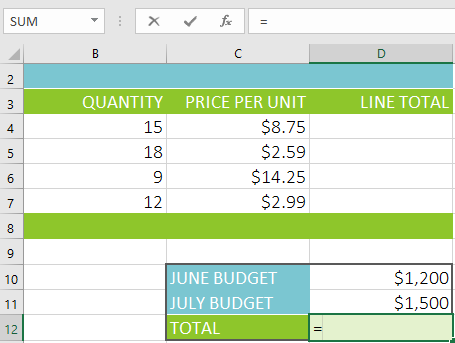
- Type the cell address of the cell you want to reference first in the formula: cell D10 in our example. A blue border will appear around the referenced cell.
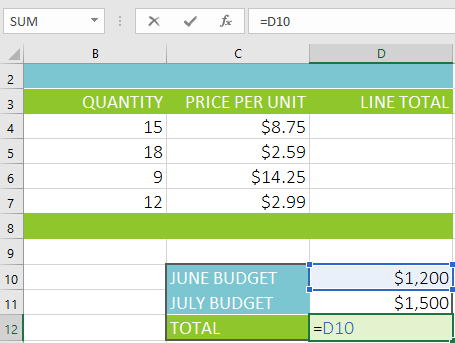
- Type the mathematical operator you want to use. In our example, we'll type the addition sign (+).
- Type the cell address of the cell you want to reference second in the formula: cell D11 in our example. A red border will appear around the referenced cell.
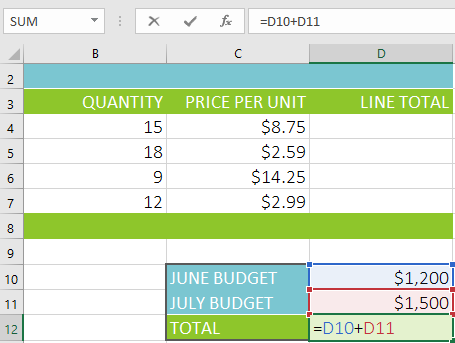
- Press Enter on your keyboard. The formula will be calculated, and the value will be displayed in the cell. If you select the cell again, notice that the cell displays the result, while the formula bar displays the formula.
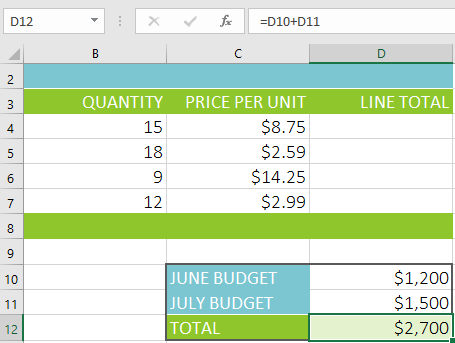
If the result of a formula is too large to be displayed in a cell, it may appear as pound signs (#######) instead of a value. This means the column is not wide enough to display the cell content. Simply increase the column width to show the cell content.
Modifying values with cell references
The true advantage of cell references is that they allow you to update data in your worksheet without having to rewrite formulas. In the example below, we've modified the value of cell D10 from $1,200 to $1,800. The formula in D12 will automatically recalculate and display the new value in cell D12.
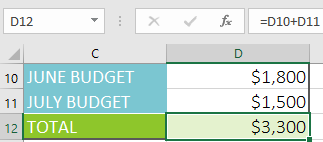
Excel will not always tell you if your formula contains an error, so it's up to you to check all of your formulas. To learn how to do this, you can read the Double-Check Your Formulas lesson from our Excel Formulas tutorial.
To create a formula using the point-and-click method:
Instead of typing cell addresses manually, you can point and click the cells you want to include in your formula. This method can save a lot of time and effort when creating formulas. In our example below, we'll create a formula to calculate the cost of ordering several boxes of plastic silverware.
- Select the cell that will contain the formula. In our example, we'll select cell D4.
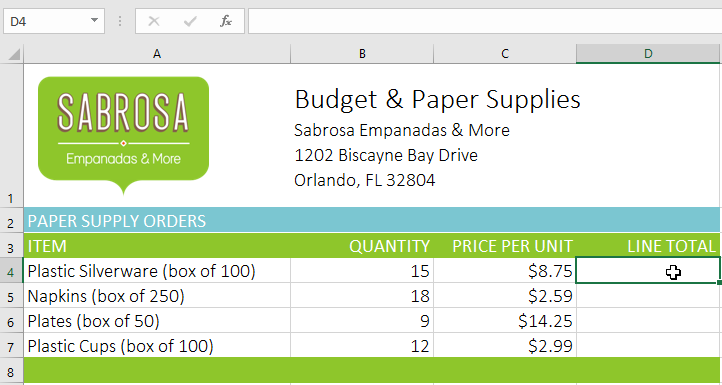
- Type the equals sign (=).
- Select the cell you want to reference first in the formula: cell B4 in our example. The cell address will appear in the formula.
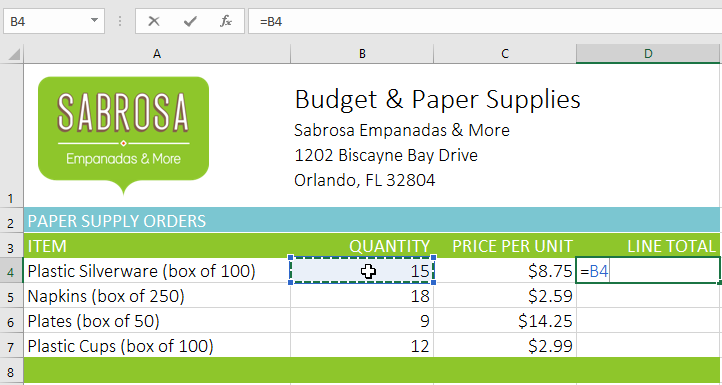
- Type the mathematical operator you want to use. In our example, we'll type the multiplication sign (*).
- Select the cell you want to reference second in the formula: cell C4 in our example. The cell address will appear in the formula.
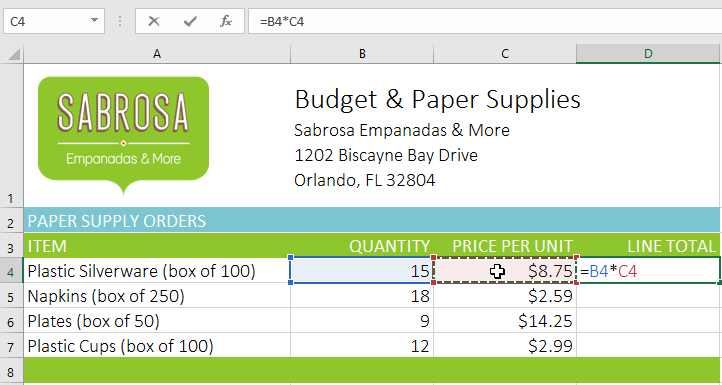
- Press Enter on your keyboard. The formula will be calculated, and the value will be displayed in the cell.
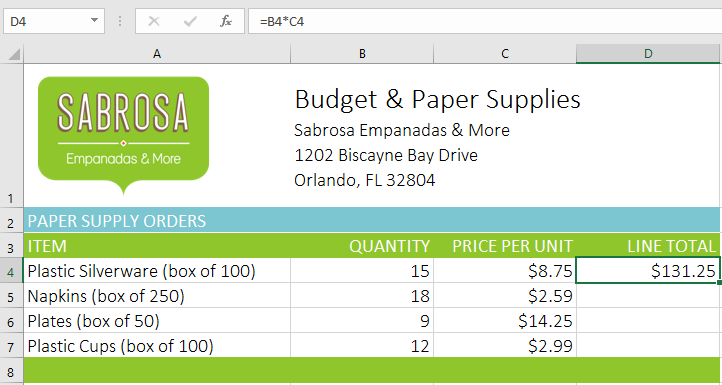
Copying formulas with the fill handle
Formulas can also be copied to adjacent cells with the fill handle, which can save a lot of time and effort if you need to perform the same calculation multiple times in a worksheet. The fill handle is the small square at the bottom-right corner of the selected cell(s).
- Select the cell containing the formula you want to copy. Click and drag the fill handle over the cells you want to fill.
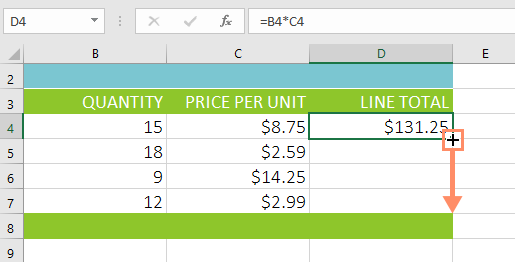
- After you release the mouse, the formula will be copied to the selected cells.
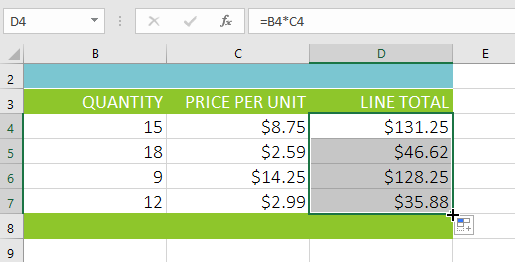
To edit a formula:
Sometimes you may want to modify an existing formula. In the example below, we've entered an incorrect cell address in our formula, so we'll need to correct it.
- Select the cell containing the formula you want to edit. In our example, we'll select cell D12.
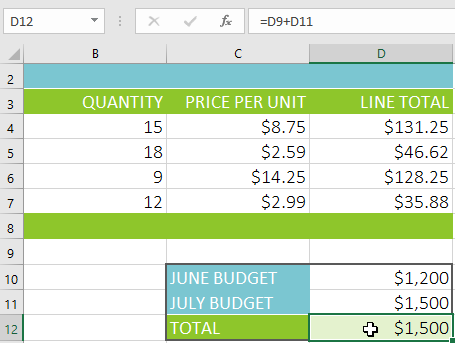
- Click the formula bar to edit the formula. You can also double-click the cell to view and edit the formula directly within the cell.
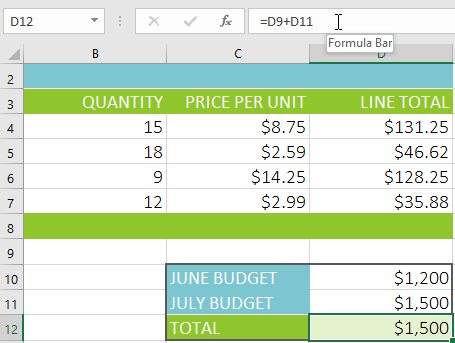
- A border will appear around any referenced cells. In our example, we'll change the first part of the formula to reference cell D10 instead of cell D9.
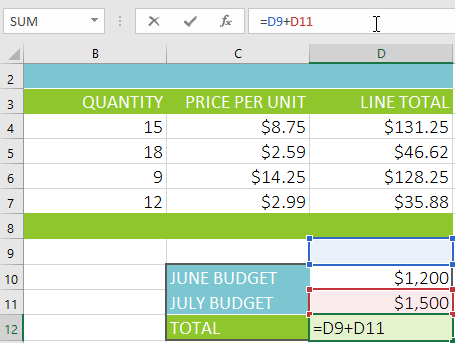
- When you're finished, press Enter on your keyboard or select the Enter command in the formula bar.
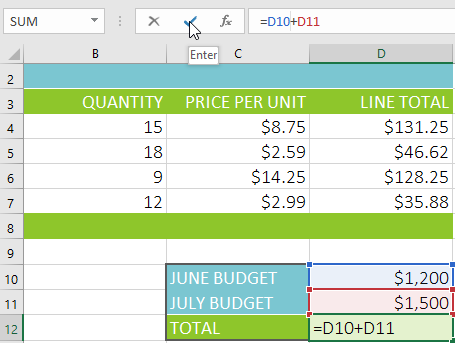
- The formula will be updated, and the new value will be displayed in the cell.
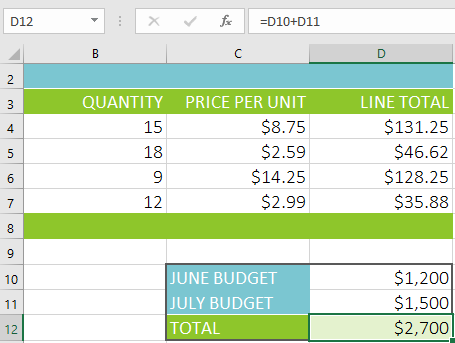
If you change your mind, you can press the Esc key on your keyboard or click the Cancel command in the formula bar to avoid accidentally making changes to your formula.

To show all of the formulas in a spreadsheet, you can hold the Ctrl key and press ` (grave accent). The grave accent key is usually located in the top-left corner of the keyboard. You can press Ctrl+` again to switch back to the normal view.
Challenge!
- Open our practice workbook.
- Click the Challenge tab in the bottom-left of the workbook.
- Create a formula in cell D4 that multiplies the quantity in B4 by the price per unit in cell C4.
- Use the fill handle to copy the formula in cell D4 to cells D5:D7.
- Change the price per unit for the fried plantains in cell C6 to $2.25. Notice that the line total automatically changes as well.
- Edit the formula for the total in cell D8 so it also adds cell D7.
- When you're finished, your workbook should look like this:
